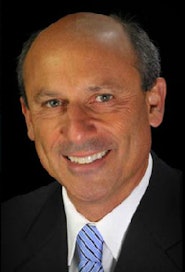
A funny thing happened on the way to my fortune; the world changed, turning my beloved profession from slam-dunk bankability to a bad business model.
Now as dentists we all studied the second law of thermodynamics in college, so we know that the universe moves from order to increased randomness (as German physicist Rudolf Clausius wrote, "The entropy of the universe tends to a maximum"). This is the scientific way of saying "*&% happens," and we accept that change is inevitable.
But in 1975 when my father said to me, "Be a dentist; you can walk into any bank and get a loan to start a business," he had no idea how wrong he would become. He did do his part and I completed seven years of private education, University of the Pacific (UOP) undergrad and UOP Dental School, with only $25,000 of debt. But that was almost 30 years ago and in that time entropy has left its indelible mark.
 David A. Landau, DDS.
David A. Landau, DDS.
A recent article in the Sacramento Bee estimates that the current full costs of matriculating from my alma mater, now called the Arthur A. Dugoni School of Dentistry, are upward of $350,000. Name changes must be expensive.
So let's imagine that you know a young person who's passionate about dentistry but not from a wealthy family. Upon leaving college, said youngster could easily have racked up $50,000 in student loans. And if the next step is a private dental school, this student loan debt could reach $400,000 before our friend ever walks into that bank for a business loan. With any luck this passionate young dentist is not even thinking about starting a family when he or she looks to buy a practice, which might cost anywhere from $200,000 to $800,000, maybe more. For the purposes of easy math and the pure shock value of it all, let's round all of these numbers off to a cool million dollars to buy a practice in dentistry regardless of where our passionate and hopefully childless young dentist went to school.
Now let's take a leap of faith and imagine that a bank will actually loan our young dental professional with no formal business training or tangible inkling of developed business acumen the money. If we liked our young friend, we would ask him or her one really big and important question: Where's the return on the investment?
Unfortunately, the answer would, more often than not, be there isn't any, or at least not enough of a return commensurate with the time and money invested combined with the rigors of running a dental practice. Keep in mind that what we do is difficult. Performing even mediocre dentistry is difficult. Performing consistently excellent dentistry is much more difficult and managing the business and personnel is even harder still. Dr. John Kois is famous for saying that "There is no joy in mediocre dentistry," and he is right. But there is even less joy in being poorly rewarded, no matter how good your dentistry is.
On top of all of this, statistics show that fewer Americans are seeking routine dental care, while dental insurance providers are drastically reducing their payments for services rendered. Because of these market forces, we are currently witnessing the rise of corporately owned and operated dental practices. So our young dental professional can now practice his or her passion as an independent contractor without the stress of paying off a large business loan.
But what are the costs of this practice paradigm shift? In the corporate dental world, the rewards for our young dentist will likely be based more on profit than on excellence. I am a big fan of profit, but without the direct influence of the free market on our practitioner, there would be little motivation to achieve clinical excellence. Being sheltered by a major corporate dental umbrella could not only stifle the development of skills, it could also place a low ceiling on earnings, and turn our profession into a trade.
So how can a private practice survive? Well, we can't control market forces, and we all have to seek to find a way to practice that is right for each of us. Perhaps our passionate young dentist could actually afford to start a family working for a corporation? But I, for one, would find the lack of control to be a joyless professional existence.
So if we all, our youngster included, want to maintain entrepreneurial control of our practices, we must wake up and smell the entropy, meaning first that we must be vigilant to not overextend ourselves financially with our education or our practice overhead. If private practice pencils out, we must understand that the days of expensive reconstructive and cosmetic dentistry being financed by second mortgages on inflated properties are gone and not coming back.
We must see that the pool of patients who can afford and value excellent dentistry is getting shallower. But we also should rejoice in the knowledge that this pool still exists and will continue to do so. How do I know this? Well the fact that high-end private dental practices continue to thrive in countries with socialized dental care, such as Canada and England, tells me that we in the U.S. have a pretty good chance to succeed.
However, in order to succeed, we need to be able to deliver the goods. The patients who we need to attract and keep want the best. We must exceed their expectations by striving to constantly improve both our skill sets and the patient experience in our practices.
And what do these patients want the most? They want to look good and feel good. So a strong understanding of cosmetic restorative dentistry will continue to be an essential part of the evolving private dental practice. To this end, I personally will dedicate the remainder of my career to pushing the cosmetic envelope, because I need to constantly grow as a clinician and because eventually I will want to sell my practice to that passionate young dentist.
David A. Landau, DDS, is an accredited member of the American Academy of Cosmetic Dentistry who practices at the Art of Dentistry in San Diego.
The comments and observations expressed herein do not necessarily reflect the opinions of DrBicuspid.com, nor should they be construed as an endorsement or admonishment of any particular idea, vendor, or organization.



















